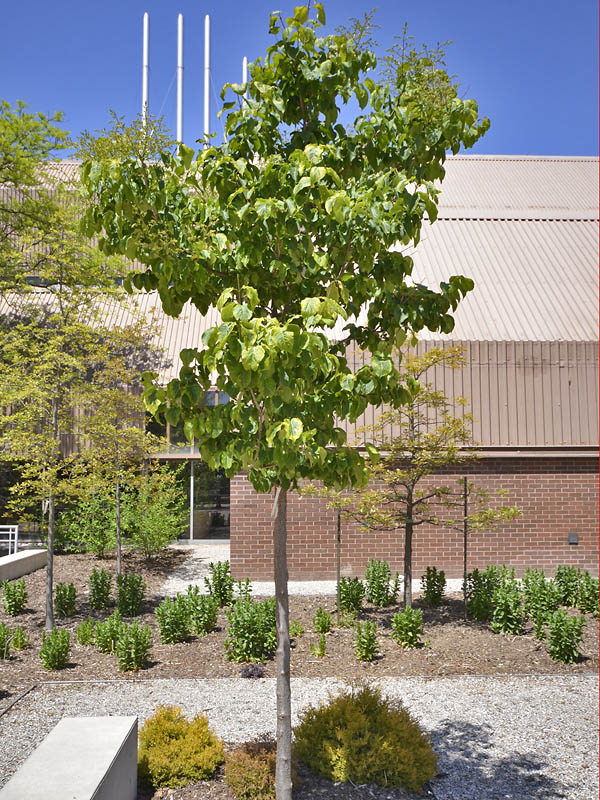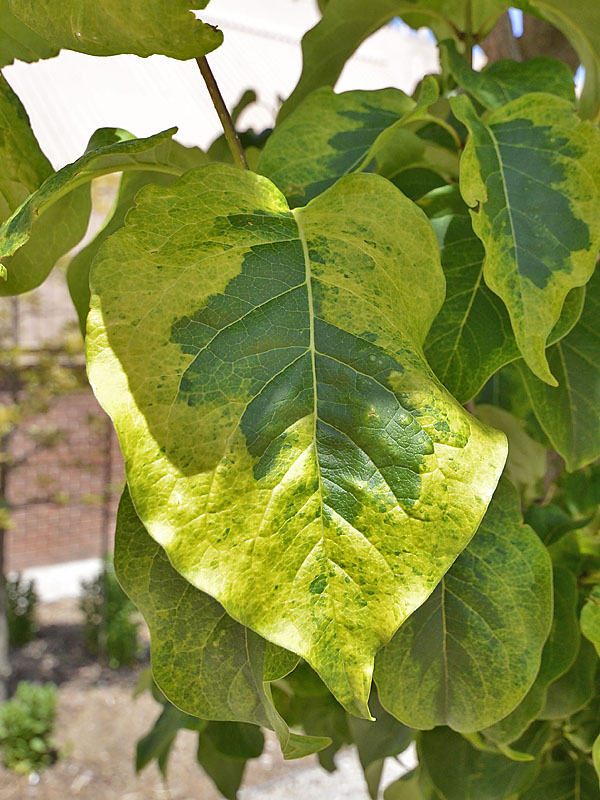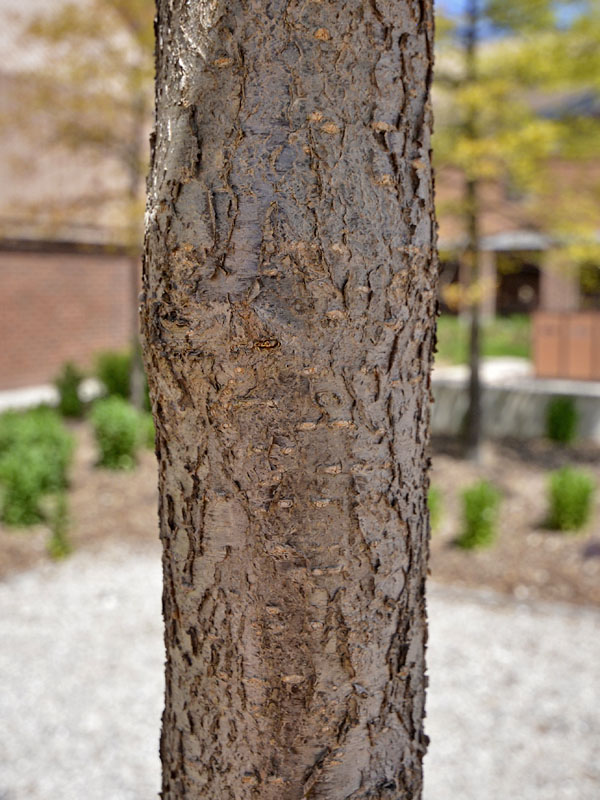| General Description | Golden Eclipse is known as a small deciduous tree or a large deciduous shrub. It has dark green leaves with clusters of creamy white flowers in June. The fruit is warty and glabrous. It also has cherry-brown to brown branches. |
| Shape | An oval rounded crown. |
| Landscape | It is a fantastic specimen tree, street tree, and is good in groups and/or near large buildings. |
| Cultivation | It can be grown in full sun to some afternoon shade. Although it does well in lean soils, Golden Eclipse prefers well-drained, moist soils. |
| Pests | This plant is usually free of foliage mildew. It can be attacked by stem borers and scale insects. It can also get leaf blights.
|
| Notable Specimens | The Gardens of Fanshawe College, London, Ontario, Canada. |
| Habitat | Horticultural origin. |
| Bark/Stem Description | Old and new stems are usually cherry-reddish brown to brown. The lenticels are horizontally marked, and that is a good way to tell the difference between different lilacs. The trunk becomes scaly and grey when aged. |
| Flower/Leaf Bud Description |
|
| Flower Description | The flowers are big and creamy-white that grow in clusters all over the shrub/tree.
|
| Fruit Description | The fruit capsule is 1 - 1.5 cm long, dehiscent, glabrous, warty and scimitar shaped. |
| Colour Description | Brilliant green colour leaves and plain creamy white colour of flowers. |
| Texture Description | The bark is smooth with little rough patches on the stems. The leaves have a rough front and rough back. |


